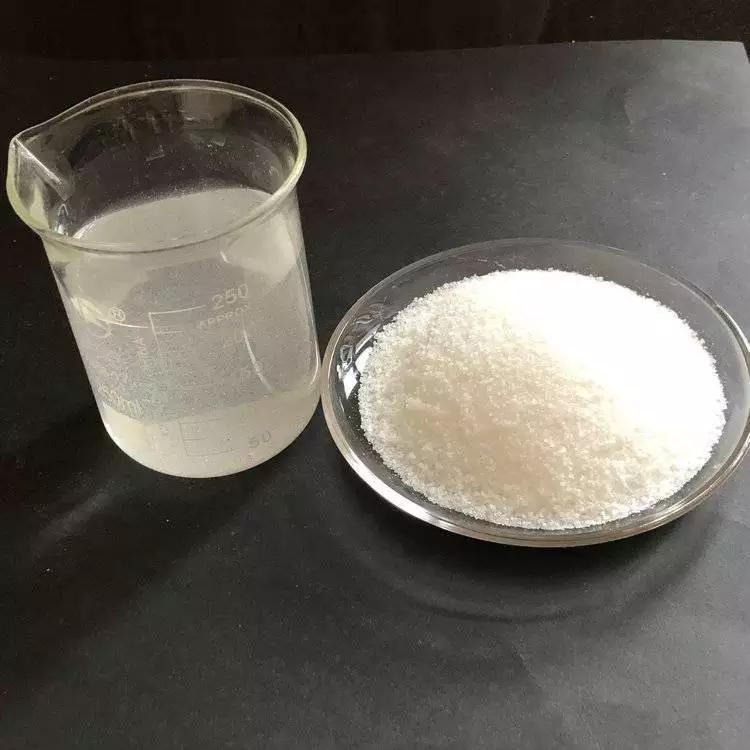Flocculation precipitation is an effective and low-cost pretreatment method used in water treatment.. There are many methods of water treatment, such as adsorption, chemical oxidation, electrodialysis, biochemistry and ion exchange. However, as one of the oldest water treatment methods, the flocculation precipitation method has been widely used in water treatment both domestically and internationally. Flocculant is added to water to condense suspended particles and colloids into larger aggregates, achieving the purification and separation of water quality. This method is simple, efficient, and the investment cost is also low, thus gaining increasing attention.

Common areas of flocculants
Food grade flocculants
The application fields of products have expanded from China’s petroleum industry to urban sewage, industrial wastewater, drinking water, mining, paper making, textile, ceramics and other fields.
Methods of using food-grade flocculants in waterworks include:
- Determine the best type and dosage of treated tap water through small tests.
- Dissolve one thousandth of the aqueous solution in tap water. While dissolving, evenly sprinkle the flocculant into stirred water, and gentle warming (< 60℃) can accelerate the dissolution process.
Drinking grade flocculant:
Food-grade flocculants, used in waterworks, find wide applications in tap water and the sugar industry. Food grade refers to an agent that can handle imported products. In general, this flocculant is relatively expensive and uses imported brands.
High efficiency flocculant
- Polyacrylamide is under the action of the initiator, by the acrylamide monomer homopolymer or copolymerized with other monomers, is a linear polymer, it is soluble in water, it is white powder particles or solid content of more than 90% of the powder of the dry powder appearance.
- It is odorless, non-corrosive and relatively stable at room temperature. It can degrade under high temperature and freezing conditions, thereby reducing the flocculation effect.
- Dry powder polyacrylamide can be categorized into anionic, cationic, non-ionic, and zwitterionic types based on its structure. According to molecular weight, it can be divided into ultra-high relative molecular weight PAM(mainly used as a tertiary oil recovery displacement agent in oil fields), high relative molecular weight PAM(mainly used as a flocculant), medium relative molecular weight PAM(mainly used as a dry strength agent for paper) and low relative molecular weight PAM(mainly used as a dispersant), with molecular weight between 3 million and 25 million. It is commonly referred to as the “additive of all industries”.
Water purification flocculant
When used as a flocculant, it can achieve separation, precipitation, and clarification effects by adsorbing solid particles suspended in wastewater, bridging particles through charge neutralization, or condensing particles into large polymers. Different types of polyacrylamide have different effects on different sewage properties, and appropriate material selection can improve operation efficiency and greatly reduce costs
Conclusion
Looking at the current situation of flocculants, it can be seen that there are many kinds of flocculants, from low molecules to polymers, from single type to compound, and the overall trend is to develop in the direction of cheap, practical, non-toxic and efficient. Inorganic flocculants are cheap, but they have adverse effects on human health and ecological environment. Although the amount of organic polymer flocculant is small, the output of scum is small, the flocculation ability is strong, the floc is easy to separate, and the effect of removing oil and suspended matter is good, the residual monomer of these polymers has “three causes” (inducing disease, carcinogenesis and mutagenicity), so its application scope is limited. Microbial flocculant has no secondary pollution, is easy to use, and has a good application prospect. Microbial flocculants may replace traditional inorganic polymers and synthetic organic polymer flocculants in the future. The research and development and application of microbial flocculants are in the ascendant, and their characteristics and advantages show broad prospects for the development of water treatment technology.
